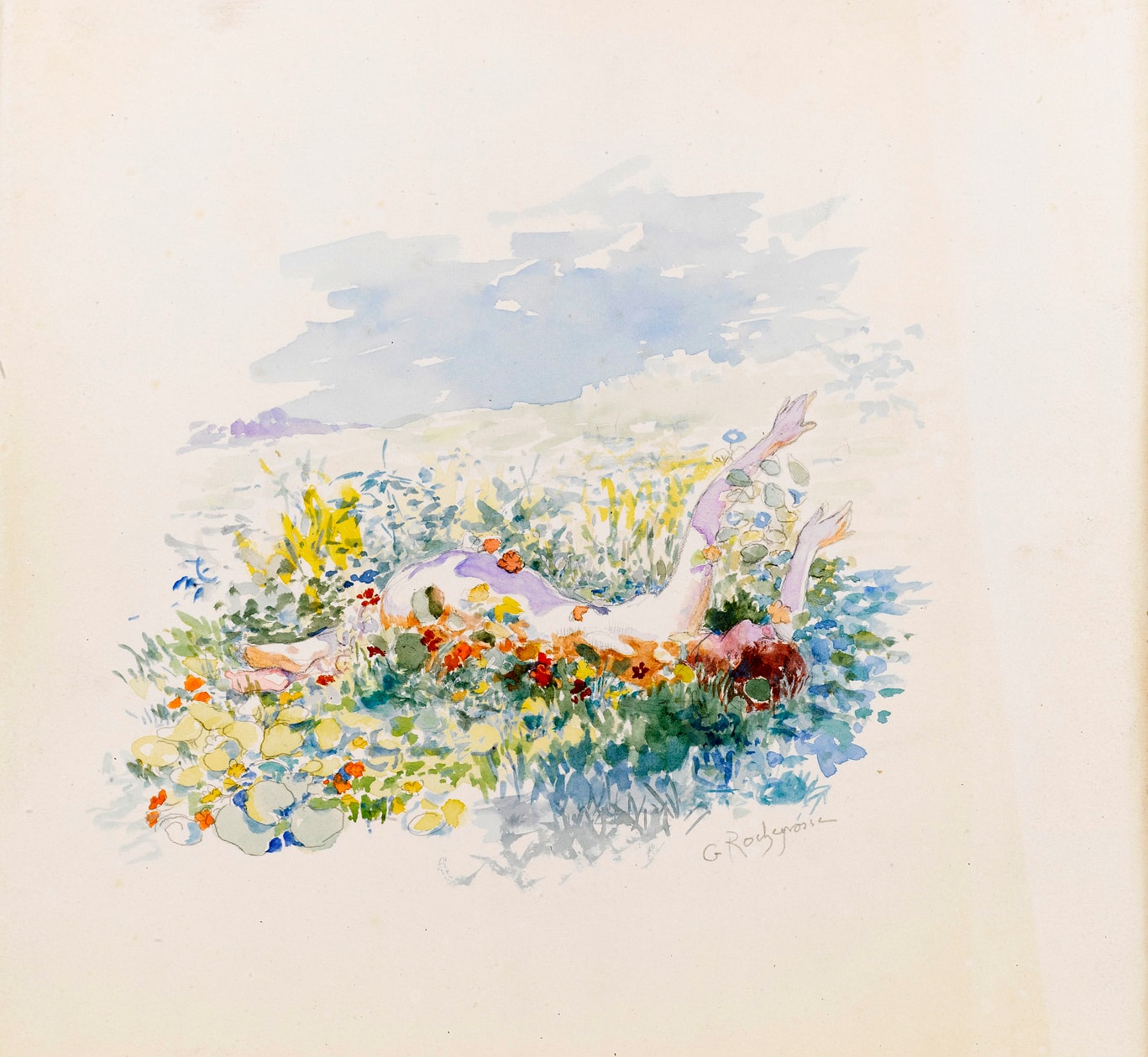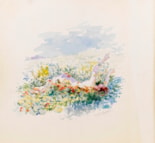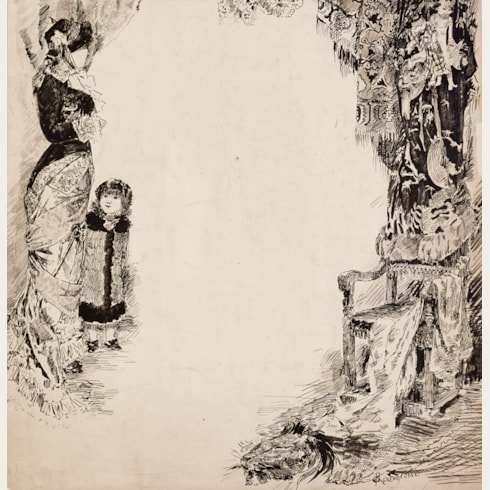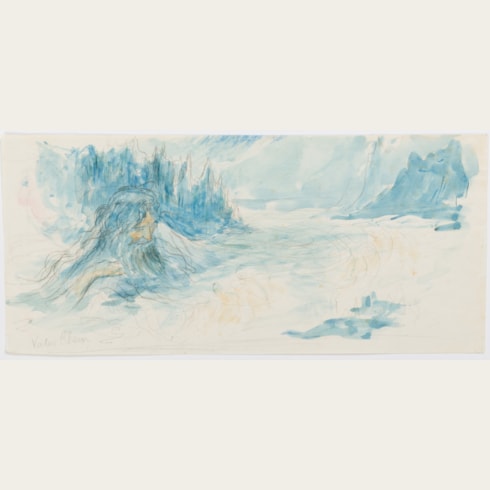Georges Antoine ROCHEGROSSE
(Versailles 1859 - El-Biar, Algiers 1938)
A Woman Reclining in a Field of Flowers: Study for Le Chevalier aux Fleurs
Signed G Rochegrosse at the lower right.
237 x 241 mm. (9 3/8 x 9 1/2 in.) [sheet]
Wagner’s operas were popular subjects among French Symbolist painters, and Rochegrosse also painted subjects from Die Meistersinger von Nürnberg and Tannhäuser. In his painting of Le Chevalier aux Fleurs, however, the artist chose not to precisely follow the libretto of the opera. As Rochegrosse explained in an article published in 1894, ‘je n’ai voulu en aucune façon représenter exactement la scène de l’opéra de Wagner. J’ai négligé volontairement le décor avec le château magique, le costume de Parsifal et tous autres détails se rapportant d’une façon trop absolue au livret de l’Opéra. J’ai voulu généraliser et comme symboliser l’idée même de la scène. L’être épris de l’idéal, les yeux fixés vers son but, marche à travers la vie, presque sans s’apercevoir des tentations, sans entendre les voix qui l’appellent au dehors de sa route. C’est seulement à l’approche du héros et par rapport à lui que les fleurs se personnifient et deviennent des formes tentatrices. Après son passage, elles retombent à l’état impersonnel et reprennent leur forme primitive.’
Many of Rochegrosse’s paintings of the period between 1890 and 1920 feature his favourite model; his wife Marie Leblond, who is likely to have posed for the present sheet. Another watercolour study of the same figure is illustrated in colour in a deluxe edition of Octave Charpentier’s poem Le chevalier aux fleurs, inspired by Rochegrosse’s large painting, published in Paris in 1941. The book reproduces several preparatory studies by Rochegrosse for the painting.
By the turn of the century, however, Rochegrosse had come to be best known as a fashionable painter of Orientalist and mythological subjects, finding inspiration for much of his work in his travels throughout North Africa. From 1900 onwards the artist spent the winter months in Algeria, where he maintained a studio in El-Biar, a suburb of Algiers. He also frequently exhibited at the Salon des Artistes Algériens et Orientalistes and at the Union Artistique de l’Afrique du Nord. By the end of the first decade of the 20th century Rochegrosse was seen as one of the leading exponents of Orientalism in France, exhibiting his work at the annual Salons, as well as at the Salon des Peintures Orientalistes Français.
Rochegrosse grew up in a literary and artistic milieu. From an early age he made drawings that were reproduced in the journal La Vie Moderne, and his work continued to be featured in magazines throughout his career, particularly from the 1890s onwards. His friendships with writers and poets also meant that he was often asked to illustrate their books, and he produced drawings for Gustave Flaubert’s Salammbô, Victor Hugo’s Les Misérables and Charles Baudelaire’s Les Fleurs du Mal, as well as books by his stepfather Théodore de Banville, Anatole France, Théophile Gautier, Pierre Louys and several other writers. The artist’s original drawings for these illustrations were often exhibited at the Galerie Georges Petit in Paris and at the Salons de la Société des Aquarellistes Français. Rochegrosse also produced designs for posters, theatrical productions and Gobelins tapestries.
Literature
Exhibition






